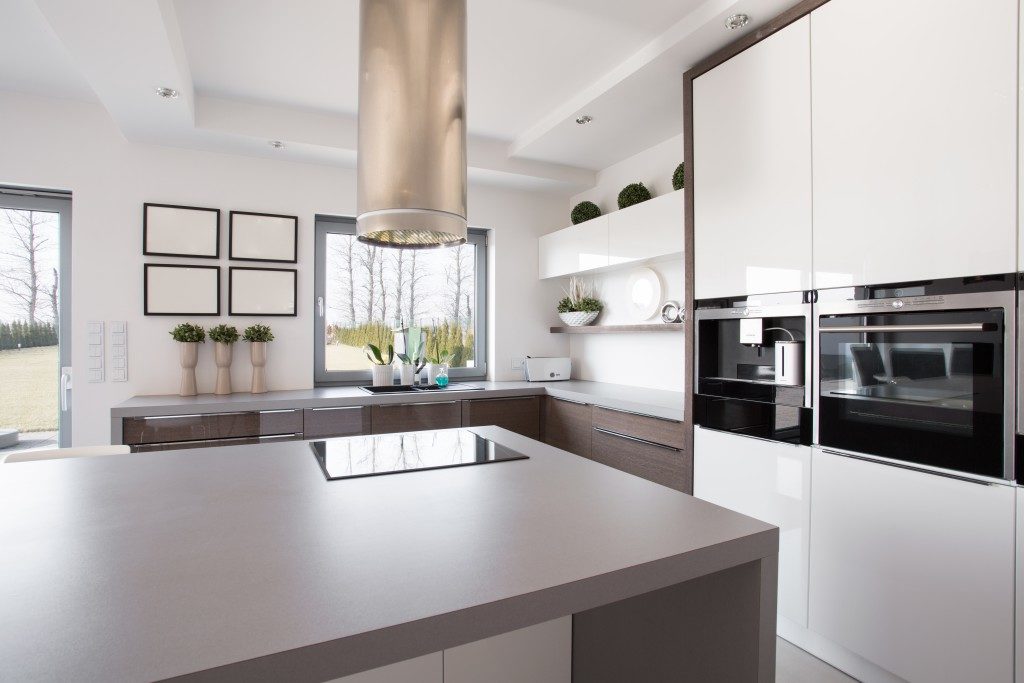- Establish a clear vision for your space by creating a mood board and researching interior design styles.
- Plan a budget and timeline, prioritizing areas with the most impact and allocating a contingency fund.
- Hire architects, designers, contractors, tradespeople, and pool builders to help bring your vision to life.
- Keep it functional by ensuring the layout facilitates smooth traffic flow and provides flexible storage solutions.
Your home is your sanctuary; its design should truly resonate with your personality and preferences. But achieving your dream home does not happen overnight—you must invest time, creativity, planning, and possibly even trial and error. If you want to make sure that your home is designed the way you like it, there are a few steps that you can take.
Establish a Clear Vision for Your Space
The essential first step in designing your dream home is establishing a comprehensive vision of what you want it to be. Spend time reflecting on your preferences, needs, and the kind of ambiance you wish for each room. Here are ways to help you visualize your dream home:
Create a Mood Board
A mood board is a compilation that is a great way to get inspired and create a clear vision of the atmosphere you want for each room. Gather images from magazines, online, or your own photographs that evoke the feeling you are aiming for.
Research Interior Design Styles
There are countless interior design styles that you can choose from. The two main categories are modern styles, which often feature clean lines and minimalistic elements, and traditional designs with a more ornate approach. Analyze the different elements in each style—what materials, furniture pieces, and color schemes they employ—to decide which one resonates most with you.
Plan Your Budget and Timeline
Once you have a vision in mind, it’s time to plan your budget and timeline. Determine how much you are willing to spend on each room’s design, and be realistic about the time it will take to complete each aspect of the project. To navigate this, do the following:
Prioritize Areas with the Most Impact
Consider where you’ll likely spend the most time in your home, as these places should be designed first. These areas will require more of your budget since they feature higher-end pieces.
Set a Contingency Fund
You should always consider unexpected costs when planning for your project. Setting aside a contingency fund can help you cover any additional fees in the design process. Unexpected surprises include problems with plumbing, electrical wiring, and any other unforeseen incidents, such as moisture damage to the walls or flooring.

Hire a Professional
While you might have a clear vision and solid plans, seeking professional advice will help ensure your home is designed how you like it. Here are the professionals that can help you based on what you want to be added to your home:
Architects and Designers
If you’re looking to make structural changes to your home, such as a kitchen remodel or home addition, an architect may be the best person for the job. Interior designers can help you choose furniture pieces, light fixtures, and accessories that fit your style.
Contractors and Tradespeople
Contractors specialize in the construction of major projects. They can help you with any plumbing, electrical work, or carpentry that needs to be done. On the other hand, tradespeople such as plumbers, electricians, painters, and carpenters are more suitable for smaller jobs.
Pool Builders
If you plan on installing a pool, builders of custom-made pools can help you create one that fits your exact specifications. They will guide you through the design process and carry out the construction work. They will also be open to collaboration and can help bring your vision to life.

Keep it Functional
While aesthetics play a vital role in designing the home you love, don’t forget to prioritize functionality. Every design element should be visually appealing, serve a purpose, and facilitate your daily life. Ensure that your layout provides the following:
Smooth Traffic Flow
The layout of your home should be efficient and facilitate smooth traffic flow. Consider how you move between rooms, look for obstructions that can clutter up pathways, and pay attention to the natural light entering each area, so they don’t become too dark or small.
Flexible Storage Solutions
Opt for versatile storage solutions that can easily be rearranged or moved to meet your changing needs. This will enable you to keep your home clutter-free so that everything has its place and can easily be found.
Creating a dream home doesn’t happen overnight. Still, with the right planning and research, you can transform your home into an aesthetically pleasing and functional space. Remember to prioritize functionality over aesthetics for an optimal balance of the two. With these tips, you can ensure your home is designed how you like it.



